
OLEX
Το Olex είναι ένα μοναδικό σύστημα πλοήγησης και χαρτογράφησης, που αναπτύχθηκε από τη Νορβηγική εταιρεία Olex AS. Το σύστημα χρησιμοποιείται στην αλιεία, την υδατοκαλλιέργεια και τις θαλάσσιες συμβάσεις αποτελούμενο από τρία κύρια λειτουργικά στοιχεία:
- Χαρτογράφηση βυθού, στήλης νερού και θαλασσίων ρευμάτων.
- Πλοήγηση και παρουσίαση ψηφιακών χαρτών.
- Αποτύπωση πορείας.
Το Olex υπολογίζει έναν χάρτη του βυθού της θάλασσας χρησιμοποιώντας δεδομένα από GPS και βυθόμετρο. Για κάθε νέο μετρούμενο βάθος, ο χάρτης βελτιώνεται. Η συλλογή δεδομένων πραγματοποιείται αυτόματα και δεν απαιτεί καμία επέμβαση.
Ο χάρτης του βυθού της θάλασσας μπορεί να εμφανιστεί σε 2D με ισοβαθείς γραμμές ή ανάγλυφο και σε 3D με μια εικονική κάμερα που μπορεί να χρησιμοποιηθεί για να κοιτάξει γύρω από τον πυθμένα της θάλασσας. Το ζουμ βυθού χρησιμοποιείται για την επισήμανση επιλεγμένων περιοχών βάθους. Επιπλέον, υπάρχουν ειδικές λειτουργίες όπως υπολογισμός όγκου νερού και μάζας βυθού και εργαλεία αναζήτησης και αφαίρεσης λανθασμένων μετρήσεων.
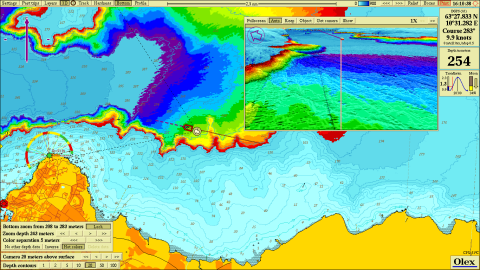
Το Olex έχει σχεδιαστεί για βέλτιστη χρήση με εύκολη λειτουργία:
- Εύκολος χειρισμός ψηφιακών χαρτών
- Γρήγορο και ομαλό ζουμ και περιστροφή χάρτη
- Εύκολος σχεδιασμός και επεξεργασία διαδρομής
- Παρακολούθηση και ονομασία στόχων ραντάρ
- Σύνδεση αυτόματου πιλότου με σαφείς πληροφορίες
- Βάθη και υψόμετρα σε μέτρα, οργιές ή πόδια
- Επισημαίνει προηγούμενες βυθομετρήσεις για βοήθεια στην πλοήγηση
- Αυτόματη διόρθωση ύψους παλίρροιας
- Δυναμική παρουσίαση σε φώτα και τομείς φάρων
- Όλα τα ταξίδια αποθηκεύονται για μελλοντική επαναχρησιμοποίηση
- Ρύθμιση φωτεινότητας και νυχτερινή οθόνη
- Λειτουργία σε πολλές γλώσσες
Οι ενημερώσεις λογισμικού από την Olex είναι δωρεάν.
Τεχνικές λεπτομέρειες
Το σύστημα λειτουργεί σε περιβάλλον UNIX, προς το παρόν, Linux. Όλο το λογισμικό δημιουργείται από την Olex AS, εκτός από τους υπολογισμούς της παλίρροιας που διαχειρίζεται η XTide2. Το σύστημα αναβαθμίζει συνεχώς τον δικό του παγκόσμιο χάρτη. Τα δεδομένα από τις μετρήσεις είναι πάντα έτοιμα για χρήση.
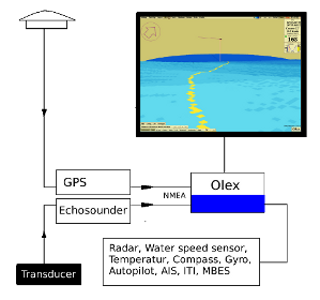
Το σύστημα λειτουργεί με ψηφιακούς διανυσματικούς χάρτες. Η αποτελεσματική χρήση ψηφιακών χαρτών απαιτεί γρήγορο επεξεργαστή. Τα κελιά του χάρτη μετατρέπονται σε μια εσωτερική συμπαγή μορφή, όπου διατηρούνται σε διαφορετικά επίπεδα ακατέργαστης κλίμακας. Για να επιτευχθεί αυτό, η ακτογραμμή και άλλες λεπτομέρειες πρέπει να υπολογιστούν εκ νέου και να μειωθούν. Με αυτόν τον τρόπο, ο χρόνος και η απαίτηση μνήμης του προγράμματος οπτικοποίησης διατηρούνται σε αρκετά περιορισμένο και σταθερό επίπεδο σε οποιαδήποτε κλίμακα ζουμ. Έτσι η οθόνη δεν γεμίζει με περιττές πληροφορίες. Με βάση το ακατέργαστο επίπεδο, το πρόγραμμα οπτικοποίησης παρουσιάζει τους χάρτες σε διάφορες κλίμακες. Με αυτόν τον τρόπο επιτυγχάνεται μια απρόσκοπτη κλιμάκωση, χωρίς ενοχλητικές λεπτομέρειες που σχετίζονται με την οργάνωση των κελιών.
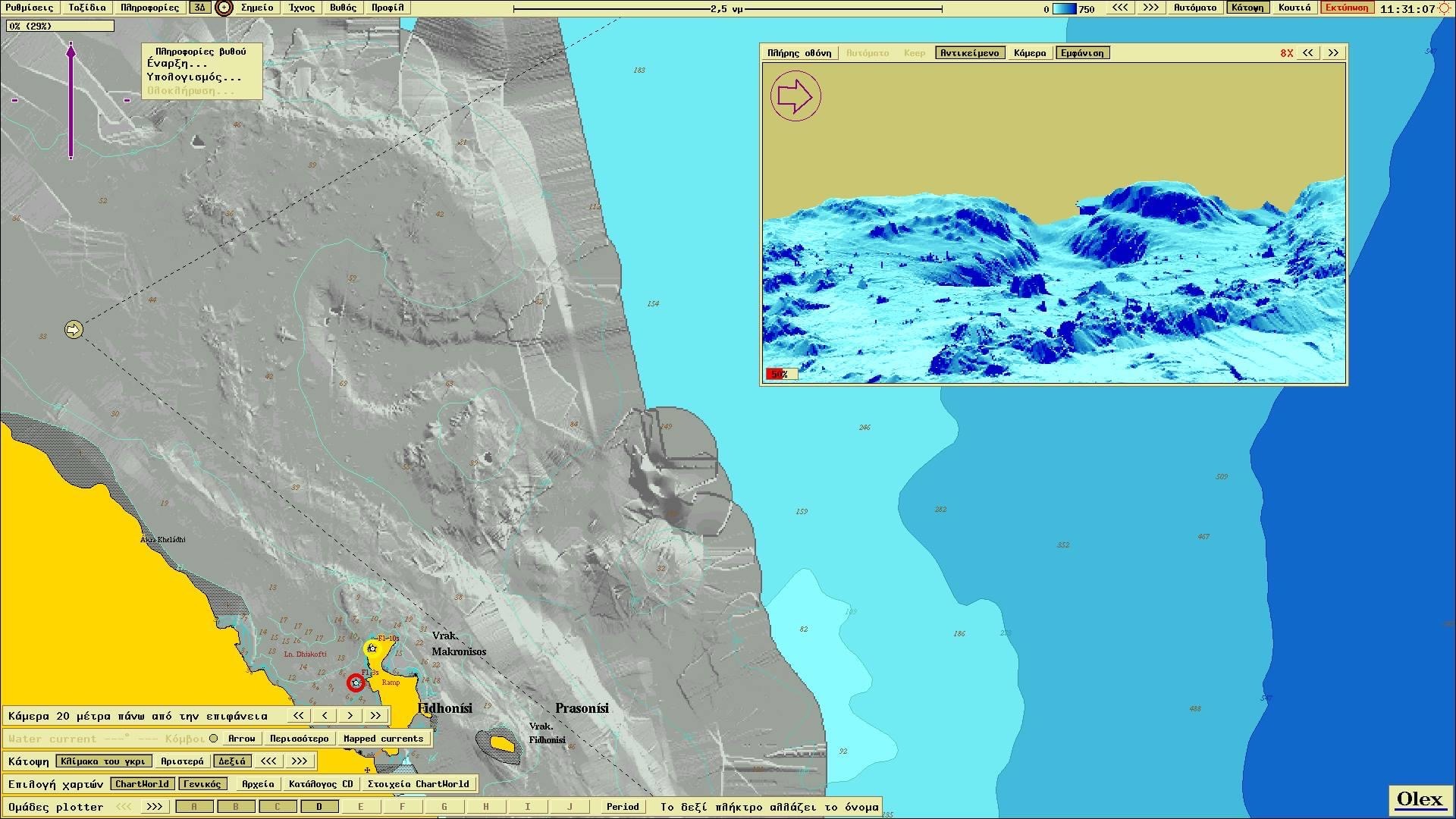
Καταγράφοντας συνεχώς το βάθος και τη θέση, το σύστημα δημιουργεί μια βάση δεδομένων όπου ο βυθός της θάλασσας χωρίζεται σε τετράγωνα οποιασδήποτε ανάλυσης. Η προεπιλεγμένη ανάλυση είναι 5Χ5 μέτρα, λαμβάνοντας υπόψη την ακρίβεια του σημερινού εξοπλισμού GPS, αλλά ο χρήστης μπορεί εύκολα να δημιουργήσει νέες βάσεις δεδομένων του βυθού της θάλασσας σε οποιαδήποτε ανάλυση έως και μερικά εκατοστά. Τα τετράγωνα μπορούν να θεωρηθούν ως ένα πλέγμα που καλύπτει την επιφάνεια ολόκληρης της γης. Περιέχουν μια τιμή βάθους που είτε μετριέται, είτε υπολογίζεται, είτε είναι άγνωστη. Οι νέες μετρήσεις οδηγούν σε επανυπολογισμό των τετραγώνων χωρίς μέτρηση, σε κάποια ακτίνα από το εκάστοτε εξεταζόμενο σημείο.
ΕΠΙΚΟΙΝΩΝΗΣΤΕ ΓΙΑ ΤΙΜΕΣ
- Αυτόματη χαρτογράφηση βυθού
- Εύκολος χειρισμός ψηφιακών χαρτών
- Γρήγορο και ομαλό ζουμ
- Εύκολος σχεδιασμός & επεξεργασία διαδρομής
- Παρακολούθηση & ονομασία στόχων ραντάρ
- Σύνδεση αυτόματου πιλότου με σαφείς πληροφορίες
- Ρύθμιση φωτεινότητας και νυχτερινή οθόνη
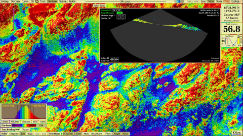



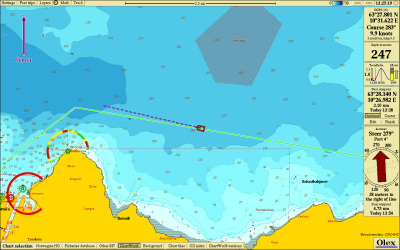
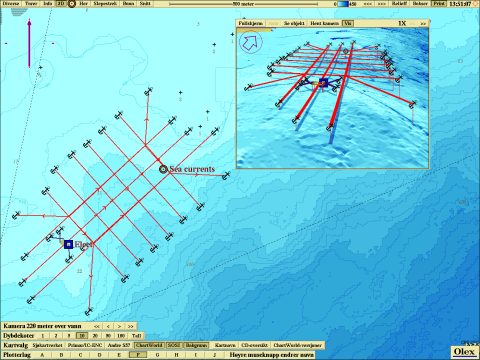

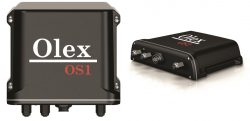
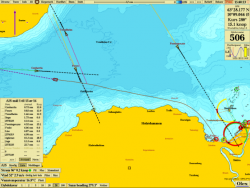 Παρακολούθηση AIS
Παρακολούθηση AIS
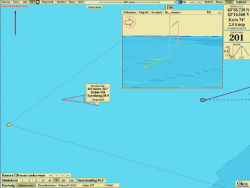 ITI – παρακολούθηση τράτας & sonar
ITI – παρακολούθηση τράτας & sonar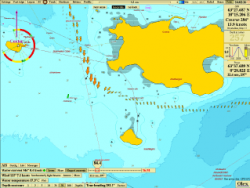 SB – επιφανειακά θαλάσσια ρεύματα
SB – επιφανειακά θαλάσσια ρεύματα ATEC – multi beam
ATEC – multi beam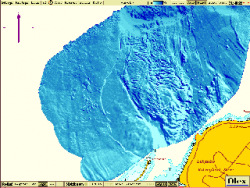 Spatial – αισθητήρας για ATEC
Spatial – αισθητήρας για ATEC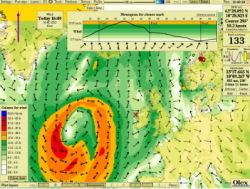 GRIB- πληροφορίες καιρού
GRIB- πληροφορίες καιρού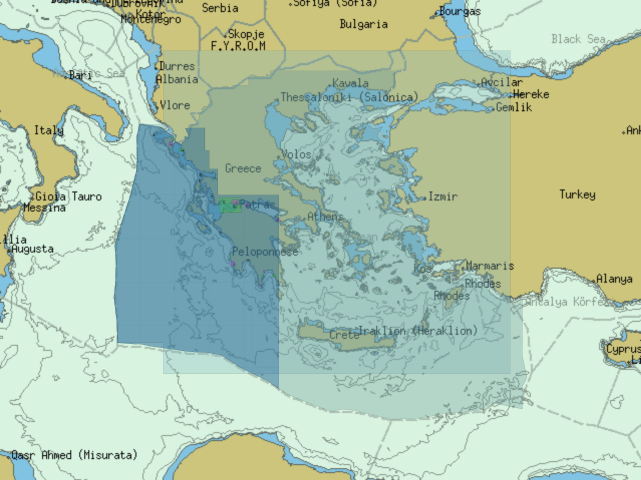 Χάρτες
Χάρτες























